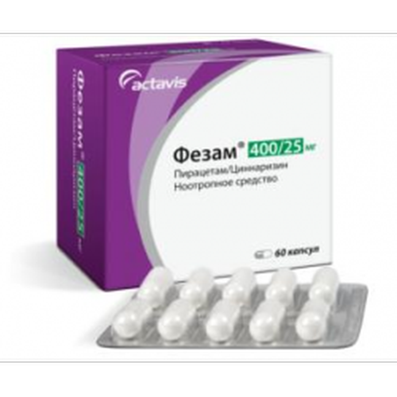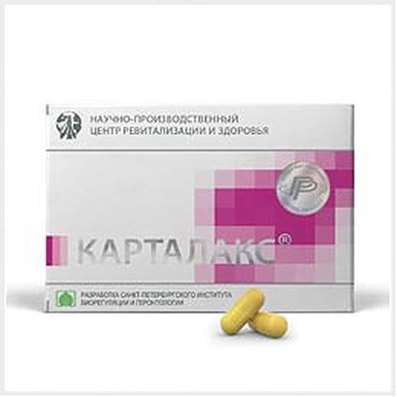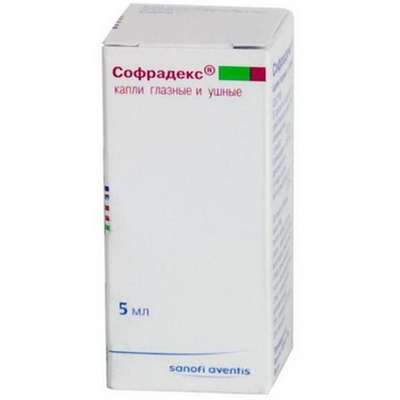Instruction for use: Alpharona
I want this, give me price
Dosage form: Lyophilizate for the preparation of a solution for intranasal administration; Lyophilizate for solution for injection and topical application
Active substance: Interferonum alpha-2b
ATX
L03AB05 Interferon alfa-2b
Pharmacological groups:
Other antineoplastic agents
Antiviral drugs (excluding HIV)
Interferons
The nosological classification (ICD-10)
A86 Viral encephalitis, unspecified: Viral encephalitis; Enterovirus meningoencephalitis; Encephalitis of viral etiology; Encephalomyelitis of viral etiology
B16 Acute hepatitis B: Viral hepatitis B; Hepatitis B; Acute hepatitis; Vaccination against hepatitis B; Subacute hepatitis; Acute viral hepatitis B; Acute lingering hepatitis B
B18.2 Chronic viral hepatitis C: Hepatitis C; Recurrence of chronic hepatitis C; Chronic active hepatitis C; Chronic viral hepatitis C; Chronic hepatitis C without cirrhosis; Chronic hepatitis C
B18.8 Other chronic viral hepatitis: Chronic active hepatitis D; Chronic hepatitis Delta; Chronic hepatitis A; Chronic viral hepatitis D
B30 Viral conjunctivitis
C44 Other malignant neoplasms of the skin: Malignant skin tumors; Basalioma; Basaliomas; Basal cell epithelioma; Basal cell carcinoma; Basal cell carcinoma of the skin; Basal cell carcinoma of the skin; Malignant reticulosis; Ulcerated basal cell; Skin Cancer; Skin carcinoid; Skin Lymphoma; Primary reticulosis; Primary skin reticulosis; Squamous cell carcinoma; Squamous cell carcinoma of the skin; Superficial skin tumors; Skin cancer; Reticulosis of the skin; Skin Reticulosarcoma; Sarcomatosis of the skin; Skin cancer (endophytic forms of I and II stages); Squamous cell carcinoma and basal cell carcinoma
C44.9 Malignant neoplasms of skin of unspecified area: Malignant exudative erythema; Skin cancer (endophytic forms of I and II stages)
C46 Kaposi's sarcoma: Kaposi angioreticulosis; Endotheliosarcoma; Kaposi angiosarcomatosis; Kaposi hemangiosarcoma; Kaposi haemorrhagic sarcoma; Kaposi multiple hemorrhagic sarcoma; Kaposi telangiectatic pseudo-sarcoma; Kaposi's Sarcoma in AIDS patients; Varioleiform pustulosis of Kaposi; Kaposi's Sarcoma in AIDS; Kaposi's sarcoma on AIDS; Kaposi's sarcoma on the background of AIDS; AIDS-associated Kaposi's sarcoma
C64 Malignant neoplasm of kidney, other than renal pelvis: Wilms tumor; Kidney Cancer; Metastatic Renal Cell Carcinoma; Renal carcinoma; Inoperable kidney carcinomas; Metastatic kidney carcinoma; Metastatic Renal Cell Carcinoma; Wilms tumor; Wilms swelling; Adenomyosarcoma; Adenomyocystosarcoma; Adenosarcoma of the kidney; Kidney Cancer; Common renal cell carcinoma; Nephroblastoma; Nephroma; Embryonal nephroma; Recurrent carcinoma of the kidney; Birch-Hirschfeld Tumor; Common renal cell carcinoma; Tumors of the kidney
C84.0 Mushroom mycosis: Mycosis mushroom; Fungoid granuloma
C91.0 Acute lymphoblastic leukemia: Recurrence of acute leukemia; Blast Crisis; Blest Crisis; Lymphoblastic leukemia; Lymphoid blast crisis; Acute lymphoblastic leukemia; Acute lymphoblastic leukemia in adults and children; Acute lymphoblastic leukemia in children; Acute lymphatic leukemia
C91.4 Hairy-cell leucosis
C92 Myeloid leukemia [myeloid leukemia]: Ph-positive chronic myelogenous leukemia; Granulocytic leukemia; Myeloid leukemia; Myeloid leukemia; Myeloma disease; Neuroleukemia; Acute myeloblastic leukemia; Acute non-lymphoblastic leukemia; Acute non-lymphoblastic leukemia in adults; Refractory acute non-lymphoblastic leukemia; Induction of remission in PMLL; Transformation of preleukemias; Subleukemic myelosis; Myeloblastic leukemia; Myeloid leukemia
C94.4 Acute panmyelosis: Myelogenesis
D69.3 Idiopathic Thrombocytopenic Purpura: Werlhof's Disease; Idiopathic autoimmune thrombocytopenia; Idiopathic thrombocytopenic purpura of adults; Idiopathic thrombocytopenic purpura in adults; Immune idiopathic thrombocytopenic purpura; Immune thrombocytopenia; Bleeding in patients with thrombocytopenic purpura; Evans Syndrome; Thrombocytopenic purpura; Thrombocytopenia of immune origin; Chronic idiopathic thrombocytopenic purpura; Essential thrombocytopenia; Autoimmune thrombocytopenic purpura in pregnancy; Posttransfusion purpura
D76.0 Histiocytosis from Langerhans cells, not elsewhere classified
G04.9 Encephalitis, myelitis or encephalomyelitis, unspecified: Bacterial neuroinfections; Virus-bacterial meningoencephalitis; Meningoencephalitis; Mycoplasma meningoencephalitis; Parotite meningoencephalitis
G35 Multiple Sclerosis: Disseminated Sclerosis; Multiple sclerosis; Recurrent multiple sclerosis; Secondary-progressive multiple sclerosis; Exacerbation of multiple sclerosis; Mixed forms of multiple sclerosis
H19.1 Keratitis due to herpes simplex virus, and keratoconjunctivitis (B00.5 +): Recurrent ophthalmoherpes; Ophthalmoherpes; Herpetic keratoconjunctivitis; Herpetic conjunctivitis
H19.2 Keratitis and keratoconjunctivitis in other infectious and parasitic diseases classified elsewhere: Enterovirus conjunctivitis; Parenchymal keratitis
H20.9 Iridocyclitis, unspecified: Iridocyclitis; Diffusive posterior uveitis; Keratouveit; Uveitis of the middle or posterior portion of the eye; Vision-threatening uveitis of the middle or posterior portion of the eye; Keratouwites; Anterior uveitis; Sluggish anterior uveitis; Endogenous uveitis; Inflammation of the ciliary body; Uveitis of the anterior portion of the eyeball; Sympathetic uveitis
J38.1 Polyp of the vocal fold and larynx: Juvenile papillomas of the larynx; Laryngopapillomatosis; Respiratory papillomatosis of the larynx; Air cysts of the larynx; Polyps of vocal cords
L85.8 Other specified epidermal thickenings
Composition and release form
Lyophilizate for solution for injection and topical application 1 fl.
active substance: Interferon alfa-2b human recombinant 500 thousand IU; 1 million IU; 3 million IU; 5 million ME
Auxiliary substances: polyglucin; sodium chloride; Sodium phosphate monosubstituted 2-water; Sodium phosphate disubstituted
In vials; In a pack of cardboard 1, 5, 10 or 20 bottles or in contour mesh or cassette contour pack 1, 5, 10 or 20 bottles; In a pack of cardboard 1 package.
Liofilizate for the preparation of solution for intranasal administration 1 fl.
active substance: Interferon alfa-2b human recombinant (not less than) 50 thousand IU
Auxiliary substances: polyglucin; sodium chloride; Sodium phosphate monosubstituted 2-water; Sodium phosphate disubstituted
In vials; In a pack of cardboard 1 or 5 bottles (complete with water for injection 5 ml in a vial or ampoule).
Description of dosage form
Liofilizate for the preparation of solution for injection and topical application: lyophilized powder or porous mass of white or almost white color, hygroscopic.
Lyophilizate for the preparation of solution for intranasal use: lyophilized powder or porous mass of white or light yellow color, hygroscopic; After dissolving in 5 ml of water for injection, a clear, colorless or pale yellow solution is formed, without sediment and foreign inclusions.
Pharmachologic effect
Mode of action - antiviral, anti-inflammatory, immunomodulating, antitumor, antimicrobial.
Pharmacodynamics
Human recombinant interferon alfa-2b is a protein synthesized by the Escherichia coli strain, in the genetic apparatus of which the human leukocyte interferon alpha-2b gene is embedded. Identical to human leukocyte interferon alpha-2b.
Pharmacokinetics
Liofilizate for the preparation of solution for injection and topical application: when parenteral administration is disintegrated, partially excreted unchanged, mainly through the kidneys.
The drug, like all interferons, can lead to the appearance of antibodies to interferon and, as a consequence, to a decrease in the therapeutic effect.
Indication of the Alpharona
Liofilizate for solution for injection and topical application
Complex therapy in adults:
Acute viral hepatitis B - moderate and severe forms at the beginning of the icteric period until the 5th day of jaundice (in later periods, the administration of the drug is less effective, is not effective in developing hepatic coma and the cholestatic course of the disease);
Acute lingering hepatitis B, chronic active hepatitis B and D without signs of cirrhosis and with the appearance of signs of cirrhosis;
Chronic viral hepatitis C;
Viral (influenza, adenovirus, enterovirus, herpetic, parotitic), viral-bacterial and mycoplasma meningoencephalitis (the drug is most effective in the first 4 days of the disease);
Viral conjunctivitis, keratoconjunctivitis, keratitis, keratouveitis;
Kidney cancer stage IV;
Hairy cell leukemia;
Malignant skin lymphoma (mushroom mycosis, primary reticulosis);
Kaposi's sarcoma;
Basal cell and squamous cell carcinoma;
Keratoacanthoma;
Chronic myelogenous leukemia;
Histiocetosis-X;
Subleukemic myelosis;
Essential thrombocytopenia;
multiple sclerosis.
Complex therapy in children:
Acute lymphoblastic leukemia in remission after the end of inductive chemotherapy (for 4-5 months of remission);
Respiratory papillomatosis of the larynx, starting from the next day after removal of papillomas.
Liofilizate for the preparation of a solution for intranasal administration
Prevention and treatment of acute respiratory viral infections, influenza in adults and children in the initial stages of the disease.
Contraindications
Common for both dosage forms: severe forms of allergic diseases, individual intolerance to interferon preparations.
Lyophilizate for solution for injection and topical application: pregnancy.
Application in pregnancy and breastfeeding
Lyophilizate for solution for injection and topical application: contraindicated in pregnancy.
Side effects
Lyophilizate for solution for injection and topical application: with parenteral administration, chills, fever, fatigue, skin rashes and itching, leuko- and thrombocytopenia (in the case of the latter, a blood test 2-3 times a week is necessary). When the lesion is cut off, a local inflammatory reaction occurs. These side effects are not an obstacle to continued use of the drug.
When applied locally on the eye mucous membrane, conjunctival infection, hyperemia of the eye mucosa, edema of the conjunctiva of the lower arch are possible. With severe local and general adverse reactions, the drug should be discontinued.
Lyophilizate for the preparation of solution for intranasal administration: not noted.
Interaction
Lyophilizate for the preparation of solution for intranasal administration: simultaneous use of intranasal vasoconstrictors is not recommended (promotes additional drying of the nasal mucosa).
Dosing and Administration
Liofilizate for solution for injection and topical application
IM, SC, in the outbreak or under the lesion, subconjunctival or local. Immediately before use, the contents of the vial are diluted with water for injection (1 ml - with IM injection and introduction into the focus, 5 ml - with subconjunctival and local administration). The solution should be transparent, without foreign inclusions. The dissolution time should not exceed 4 minutes. The diluted drug is not subject to storage.
IM, SC introduction. In acute hepatitis B - 1 million IU 2 times a day for 5-6 days, then the dose is reduced to 1 million IU / day and injected for another 5 days. If necessary (after controlling biochemical blood tests), the course of treatment can be continued for 1 million IU 2 times a week for 2 weeks. The course dose is 15-21 million IU.
In acute prolonged and chronic active hepatitis B with the exception of delta infection and without signs of cirrhosis - 1 million IU 2 times a week for 1-2 months. If there is no effect, the treatment is prolonged to 3-6 months or after 2-3 months of treatment, 2-3 similar courses are performed at intervals of 1-6 months.
With chronic active hepatitis D without signs of liver cirrhosis - 500 thousand-1 million IU / day 2 times a week for 1 month. Repeated course of treatment - after 1-6 months.
With chronic active hepatitis B and D with signs of liver cirrhosis - 250-500 thousand IU / day 2 times a week for 1 month. When there are signs of decompensation, similar repeated courses are conducted with an interval of at least 2 months.
In chronic viral hepatitis C: adults - 3 million IU 3 times a week for 9 months; Children - 3 million IU / m2 (maximum dose - 3 million IU) 3 times a week for 9 months.
With kidney cancer - 3 million IU daily for 10 days. Repeated courses of treatment (3-9 and more) are carried out with an interval of 3 weeks. The total amount of the drug is from 120 to 300 million IU and more.
With hairy cell leukemia, the drug is administered daily for 3-6 million IU for 2 months.After normalization of the hemogram, the daily dose is reduced to 1-2 million IU. Then support maintenance is prescribed for 3 million IU twice a week for 6-7 weeks. The total amount of the drug is 420-600 million IU and more.
In acute lymphoblastic leukemia in children in remission after the end of inductive chemotherapy (for 4-5 months of remission) - 1 million IU once a week for 6 months, then - once in 2 weeks for 24 months. Simultaneously, supportive chemotherapy is performed.
In chronic myelogenous leukemia, 3 million IU daily or 6 million IU every other day.Term of treatment - from 10 weeks to 6 months.
With histiocytosis-X - 3 million IU daily for 1 month. Repeated courses - with 1-2-month intervals for 1-3 years.
With subleukemic myelosis and essential thrombocytopenia (for correction of hyperthrombocytosis) - 1 million IU daily or 1 day for 20 days.
With malignant lymphoma and Kaposi's sarcoma - 3 million IU per day daily for 10 days in combination with cytostatics (prospidin, cyclophosphamide) and GCS.
In the case of the tumor stage of fungal mycosis and reticulosarcomatosis, it is advisable to alternate IM of the drug - 3 million IU, and intraocular - 2 million IU for 10 days.
In patients with erythrodermic stage of fungal mycosis with increasing temperature above 39 ° C and in case of aggravation of the process, the drug should be discontinued. With insufficient therapeutic effect, after 10-14 days, a second course of treatment is prescribed. After achieving a clinical effect, a maintenance therapy of 3 million IU is prescribed once a week for 6-7 weeks.
With respiratory papillomatosis of the larynx, the drug is administered 100-150 thousand IU / kg daily for 45-50 days, then in the same dosage 3 times a week for 1 month. The second and third courses of treatment are carried out with an interval of 2-6 months.
With multiple sclerosis - 1 million IU: with pyramidal syndrome - 3 times a day, with cerebellar syndrome - 1-3 times a day for 10 days, followed by the introduction of 1 million IU once a week for 5-6 months. The total amount of the drug is 50-60 million IU.
Persons with a high pyrogenic reaction (39 ° C or higher) are advised to use indomethacin simultaneously for the administration of the drug.
Perifocal administration. With basal cell and squamous cell carcinoma, keratoacanthoma is administered to a lesion site of 1 million IU once daily for 10 days.In the case of pronounced local inflammatory reactions, injection under the lesion is carried out after 1-2 days. At the end of the course, if necessary, conduct a cryodestruction.
Subconjunctival administration. In stromal keratitis and keratoiridocyclitis, subconjunctival injections are administered in a dose of 60,000 IU in a volume of 0.5 ml daily or every other day, depending on the severity of the process. Injections are performed under local anesthesia with a 0.5% solution of dicain. The course of treatment - 15-25 injections.
Local application. For local administration, the contents of the vial are dissolved in 5 ml of 0.9% sodium chloride solution for injection. In the case of storage of the drug solution, it is necessary, in accordance with the rules of aseptic and antiseptic, to transfer the contents of the vial into a sterile vial and store the solution in a refrigerator at a temperature of 4-10 ° C for not more than 12 hours.
With conjunctivitis and superficial keratitis, the conjunctiva of the affected eye is applied 2 drops 6-8 times a day. As the inflammatory phenomena disappear, the number of instillations is reduced to 3-4. The course of treatment - 2 weeks.
Liofilizate for the preparation of a solution for intranasal administration
Intranasally. The contents of the vial are dissolved in 5 ml of water for injection.
At the first signs of acute respiratory viral infection, the flu: adults - 3 drops per each nasal passage 5-6 times a day (single dose - 3 thousand IU, daily - 15-18 thousand IU), newborns and children under 1 year - by 1 drop 5 times a day (single dose - 1 thousand IU, daily - 5 thousand IU), children from 1 year to 3 years - 2 drops 3-4 times a day (single dose - 2 thousand IU, daily - 6-8 thousand IU), from 3 to 14 years - 2 drops 4-5 times a day (single dose - 2 thousand IU, daily - 8-10 thousand IU) for 5 days.
For the prevention of acute respiratory viral infection and influenza: in case of contact with the patient and / or supercooling - according to the age-related dosage 2 times a day for 5-7 days. If necessary, preventive courses are repeated. When a single contact is enough, one instillation.
With a seasonal increase in the incidence - according to the age-related dosage, in the morning, after 1-2 days. After instillation, it is recommended to massage the wings of the nose with your fingers to distribute the drug evenly in the nasal cavity.
Conditions of supply of pharmacies
According to the prescription of the doctor (lyophilizate for the preparation of solution for injection and topical application).
Storage conditions of the drug Alpharona
In a dry, the dark place at a temperature of no higher than 10 ° C.
Keep out of the reach of children.
Shelf life of the drug Alpharona
2 years.
Do not use after the expiry date printed on the package.

 Cart
Cart





